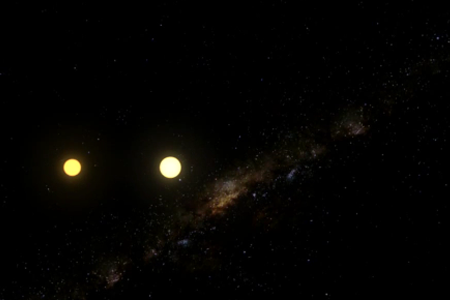Video: Two More Tattooine-Like Planets Orbiting Binary Stars? Force-Swoon.
There was a Tattooine-like planet discovered last year that orbited two stars. Swag! It was thought that this planet was something of an oddity, but apparently there’s a lot more Binary Sunsets occurring throughout the galaxy than previously first thought.
io9:
Kepler-34b and Kepler-35b are two new examples of so-called circumbinary planets, joining the previously discovered Kepler-16b. In both of these new star systems, the double suns orbit each other, and the planets orbit the combined gravitational field of the two stars. You can see an absolutely eye-popping simulation of a circumbinary planet and its orbit in the video up top.
Both of these newly discovered planets are gas giants, roughly the same volume as Jupiter but significantly less massive. Kepler-34b, for instance, is 76% the size of Jupiter, but has just 22% of our gas giant’s mass. Similarly, Kepler-35b is 74% Jupiter’s volume, but just 12% of its mass. This lightness is likely due to their mostly hydrogen atmospheres. The two occupy orbits roughly equivalent to a space somewhere between Venus and Earth, with Kepler-34b orbiting every 288 days and Kepler-35b every 131.
While neither of these planets – nor Kepler-16b, for that matter – could support life even if they were in a normal star system, their discovery means that there are likely millions and millions of circumbinary planets throughout the Milky Way. Before Kepler found these two, astronomers couldn’t be sure whether such planets really were a regular fixture of binary star systems, or if Kepler-16b was simply a unique cosmic oddity.
Now we know such worlds are common, the question then becomes what a rocky planet might look like in such a system, particularly one that might be capable of supporting life.




